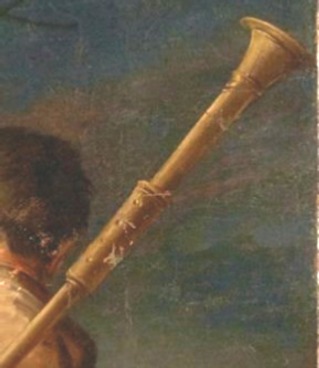The Bagpipe Society
Grace Notes

I would hazard a guess (and do correct me if I’m wrong), that the majority of members of The Bagpipe Society are experienced players of at least one type of bagpipe. So, it is sometimes easy to forget that there are people out there who are interested in the instrument but have yet to make the brave move to taking up the pipes. It can be very difficult for the keen potential player to discover if, firstly, it is the instrument for them and/or secondly to find a teacher or experienced hand to guide them through the initial stages. A decent set of pipes (and one should never begin on anything other!), even a basic set, are several hundreds of pounds so a considerable investment is required and that’s before having to face the challenge of learning them. It is therefore excellent news that in the UK there are now several events throughout the year that use The Bagpipe Society’s own sets of pipes
enabling people to start their bagpiping journey without having to make the initial expenditure. The Society owns six sets of student border pipes (3 by Jon Swayne and 3 by Sean Jones) and these are used in various ways. In 2019, the bagpipe and gurdy weekend at Halsway Manor will have Society Committee member, Dave Faulkner, leading beginners through the basic stages of playing the pipes. The weekend (8-10 February) is aimed at complete beginners and will be looking at how the instrument works, posture, tuning, basic techniques as well as a simple repertoire. A couple of weeks later in February (18-20), my own group, PIVA, will be running their annual early music course, Real Roots, again at Halsway Manor. One of the features of this course is the opportunity to “have a go” at various instruments, including bagpipes. Over the years, the course has generated several new players who have gone on to buy their own pipes and I hope that this next one will see some of these people return to play some harmony arrangements. Finally, also at Halsway, Vicki Swan is following on from her very successful inaugural Sackpipa course with another one in May next year (10-12 May). This is for Sackpipa and beginner players are welcomed. For more information on these courses then go to https://halswaymanor.org.uk/
Later in the year, the steadily growing Medieval Music in the Dales weekend (5-8 September 2019) also has sessions for beginner pipers run by Paul Leigh, again using the BagSoc pipes. The pipes are also used at various festivals and events throughout the year, for example I will be taking them with me to Chester Folk Festival (24-27 May) where I will holding at least one beginners’ session.
So, please spread the word about these courses to all your non-piping friends and encourage them to take the first step!

I’m still on my quest to look for possible explanations for the ‘fontanelles’ on late 15th and 16th century drones (Chanter Vol 32/1). I was particularly pleased to discover this image on a Facebook group feed. I had not seen it before and comes from a painting by Sebastiano Conca, c 1720 and is currently in the Paul Getty Museum in Los Angeles. It is a particularly good example of a ‘fontantelle’ and it is clear that the holes are ‘blind’ and are just purely for decoration. All in all, it’s a very interesting set of pipes and something of a big beast, complete with three chanters and far too many fingerholes! It begs the question, as so often asked, was this an actual bagpipe or one from the artist’s imagination?
Finally, many apologies to Peter Barnard, whom I inadvertently omitted from crediting for the review of the Les Haulz et Les Bas CD in the last edition of Chanter. Thanks for the review Peter!
Dear Jane,
Reading A. Buchner’s 1971 Folk Music Instruments of the World I spotted mention of an Ethiopian bagpipe known as the nibiles. Does anyone know if this bagpipe is still extant or whether recordings exist? I have not been able to find anything online that would confirm its existence. As a fan of Ethiopian music I’d love to hear it.
Many thanks, Andy Letcher

Terry Moylan, the archivist with Na Píobairí Uilleann, has alerted the society to a very interesting French site which contains a database of bagpipe images. It’s a great site for browsing with a cup of coffee – and as many of the images come from Europe, there were some unfamiliar one for me. http://bit.ly/Chanter54
- Data Processing Notice (GDPR)
-
@BagpipeSociety on X (formally known as Twitter)
-
TheBagpipeSociety on Instagram
-
 BagpipeSociety on Facebook
BagpipeSociety on Facebook
Something wrong or missing from this page? Let us know!
